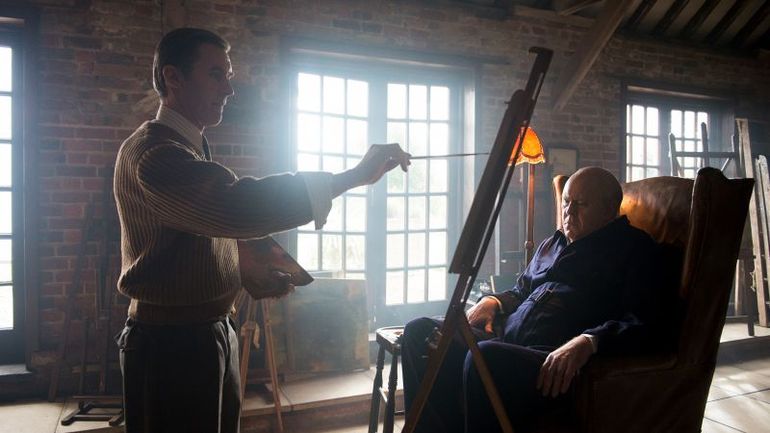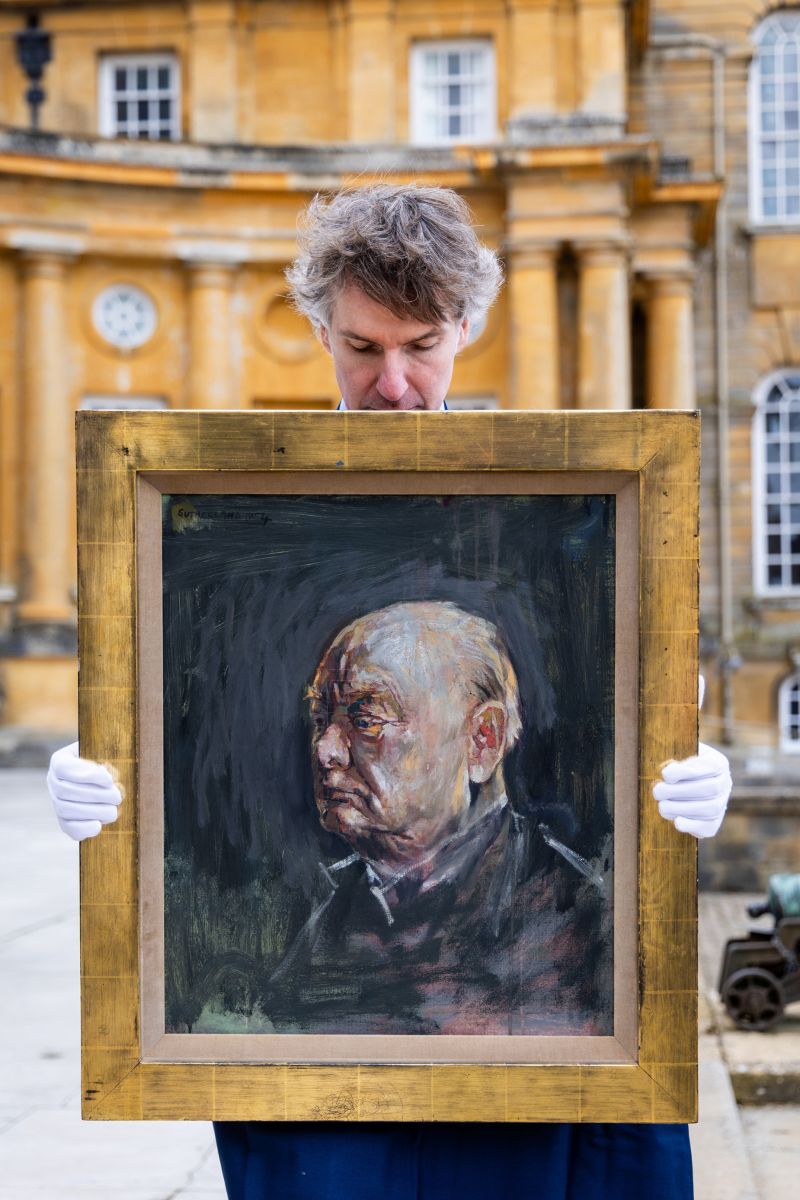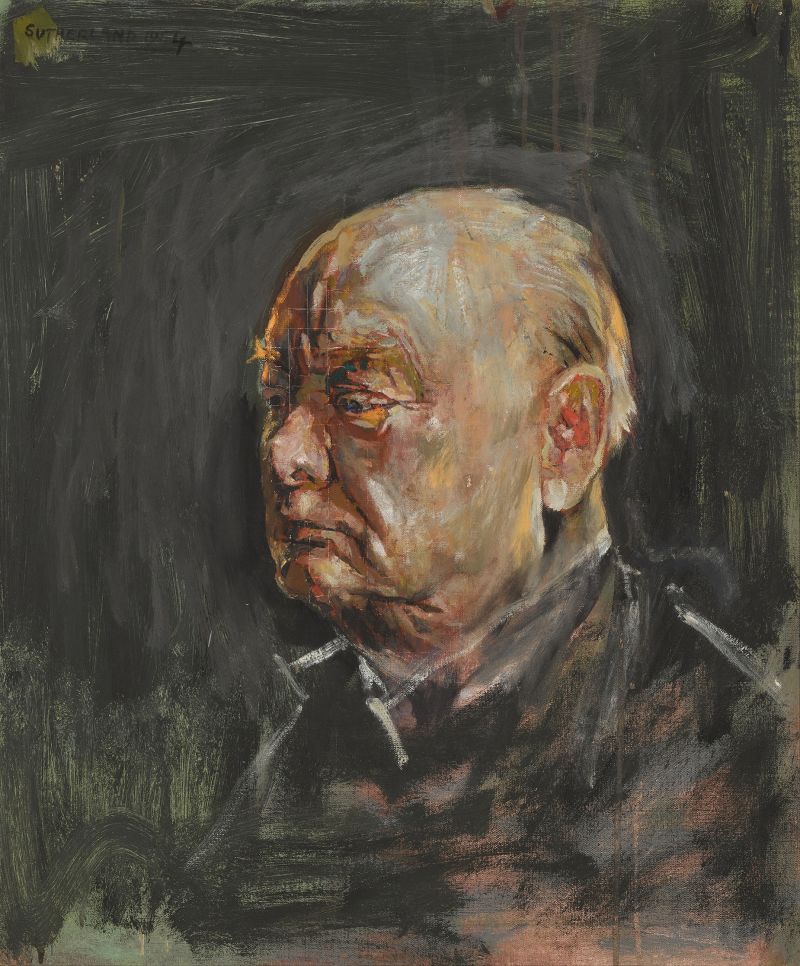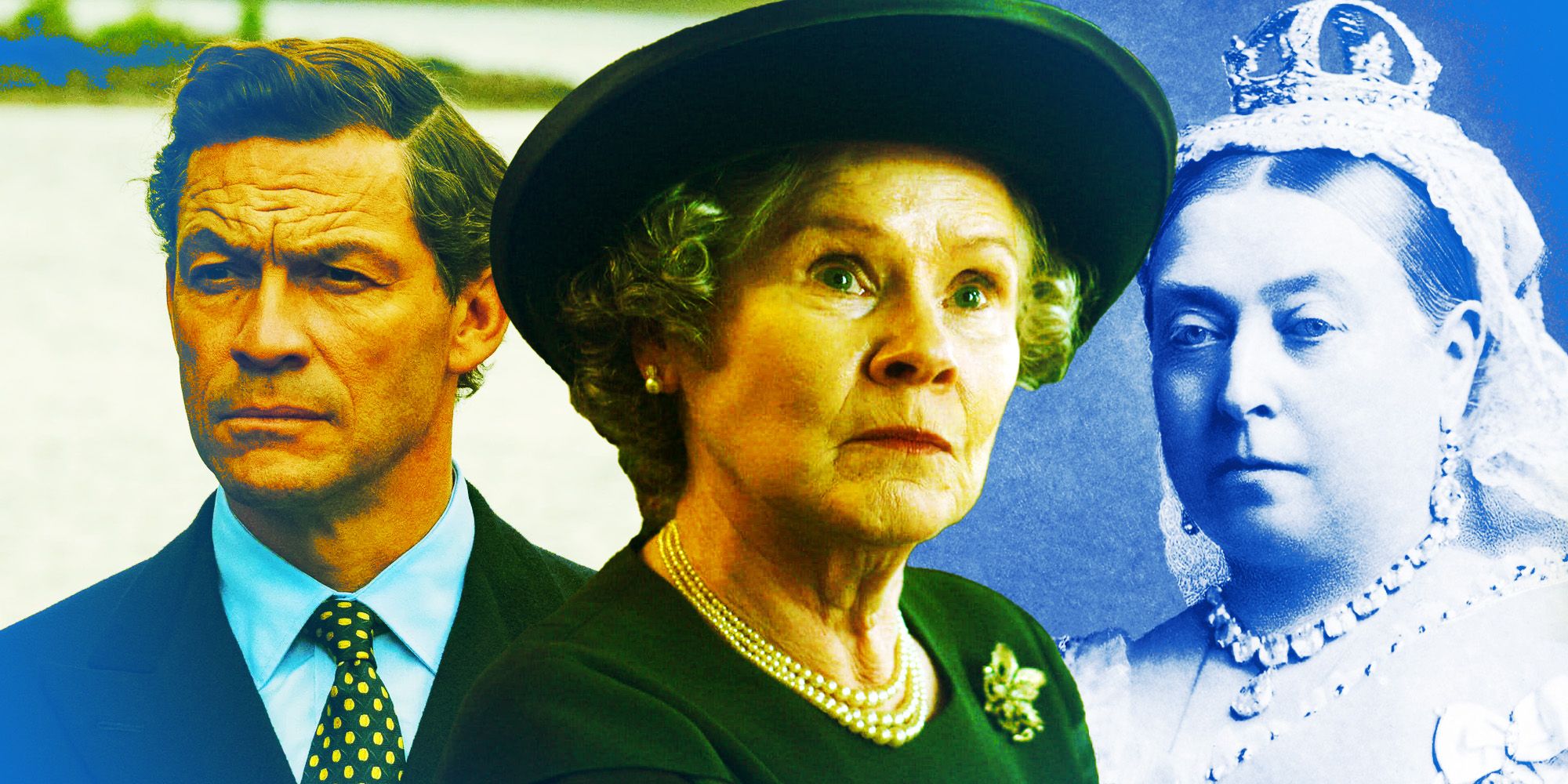
Rare Edition of Disliked Churchill Portrait Featured in 'The Crown' to be Auctioned Off

Created for the 80th birthday of the former Prime Minister, the controversial and later discarded artwork now has an earlier edition up for auction.
In the first season of "The Crown," Winston Churchill, portrayed by John Lithgow, expresses his strong displeasure towards the renowned painter Graham Sutherland, played by Stephen Dillane. The scene takes place as Churchill's commissioned portrait, intended to celebrate his 80th birthday, is revealed at London's Westminster Hall in November 1954.
Churchill bluntly criticizes the painting, describing his portrayal as that of "a broken, sagging, pitiful creature." He further accuses Sutherland of being like "a Judas wielding his murderous brush," and ultimately condemns the entire artwork as "a betrayal of friendship, and an unpatriotic, treacherous, cowardly assault by the individualistic left."
The episode ends with Churchill’s wife Clementine (played by Harriet Walter) watching it burn on a bonfire outside their home.
Evidently, he was not a fan.
This painted study of Churchill by Sutherland, made in preparation of the portrait, is up for auction for the first time.
This painted study of Churchill by Sutherland, made in preparation of the portrait, is up for auction for the first time.
"The Crown" may not be a documentary, but it is based on real events. In fact, the 80th birthday portrait that Churchill called "filthy and malignant" in a letter to his personal doctor was actually burned.
During a press briefing, Andre Zlattinger, Deputy Chairman UK and Head of Modern British & Irish Art at Sotheby's, mentioned that he believed Churchill was quite concerned about his public image. This was particularly true after he suffered a stroke in 1953 and won the election in 1951 by a narrow margin. There was a lot of discussion and scrutiny surrounding him and his leadership style during that time.
Even though the original painting was destroyed, a painted study of Churchill by Sutherland, created as a preparation for the famous birthday portrait, is currently being exhibited at the UK's Blenheim Palace until April 21. The study was given by Sutherland to his friend Alfred Hecht, who cherished it until his passing, after which it was passed on to the present owner. Following its display at the palace, the study will travel to Sotheby's New York and London for auction on June 6, with an estimated value of up to £800,000 ($997,000).
Christie's Images Ltd
Related article
Rare Winston Churchill painting sold by Angelina Jolie smashes auction record
Zlattinger explained that the study by Sutherland captured Churchill in a more relaxed and intimate manner. Unlike the later painting that Churchill disliked and eventually destroyed, this small canvas painted in oils depicted him differently.
Leaders have been controlling and falsifying their images for centuries, not just Churchill. In Ancient Egypt, sculptures of pharaohs were stylized to show their power. For example, Hatshepsut, a female pharaoh, had herself depicted with a male torso, completely diverging from reality.
Graham Sutherland, seen with his-then unfinished but eventually much-maligned portrait of Churchill. In Netlfix's depiction of events, Churchill described his appearance in the painting as “a broken, sagging, pitiful creature,” and Sutherland as “a Judas wielding his murderous brush.”
Graham Sutherland was pictured with his portrait of Churchill, which was unfinished at the time but later criticized. In the Netflix show, Churchill referred to his portrayal in the painting as “a broken, sagging, pitiful creature” and Sutherland as “a Judas wielding his murderous brush.” The image is from the Baron/Hulton Archive/Getty Images.
Queen Elizabeth I of the UK is known for distorting her image. According to Robert Blyth, Senior Curator at Royal Museums Greenwich, Elizabeth seemed to stop aging after her 40s. In one of her famous paintings, The Rainbow Portrait, any signs of aging were carefully concealed.
Queen Victoria, who came to power more than 250 years later, also tried to hide her age through paintings. However, Ira B. Nadel mentioned that Victoria's interest in photography led her to prefer more realistic portraits over idealized ones.
Blyth points out that, similar to Churchill, monarchs were driven by a bit of vanity when it came to their carefully managed image. He humorously questioned who would want to be portrayed exactly as they are. However, it was also important for leaders to maintain political stability. Elizabeth I, being the last of the Tudor line, had to avoid any hint of weakness in her image to prevent any doubts from arising.
Oliver Barker, Sotheby's European Chairman, fields bids for Andy Warhol's "Self Portrait" from 1963-64, during the Contemporary Art Evening Auction at Sotheby's on June 28, 2017 in London, England.
Oliver Barker, who is the European Chairman of Sotheby's, was in charge of handling bids for Andy Warhol's "Self Portrait" from 1963-64. This took place at the Contemporary Art Evening Auction at Sotheby's on June 28, 2017 in London, England.
The event was captured by Michael Bowles, a photographer from Getty Images Europe, who was there to document the auction for Sotheby's.
video
Related video
Art auctions can be a bit mysterious to some people. Dr. Caroline Rae, who teaches History of Art at University College London, shed some light on the subject. According to her, during times of big changes and instability, such as when people were being beheaded, art auctions played a significant role. Elizabeth, the expert noted, understood that the world was not as stable as it might seem, and she found herself in a precarious position.
Churchill's political career was filled with ups and downs. He became Prime Minister during the First World War but was quickly voted out after it ended. He returned to office for a second time in 1951, but his Conservative Party had a slim majority of only 17 seats. Unfortunately, in April 1955, just six months after the birthday portrait incident, Churchill resigned due to poor health.
“There was the Suez crisis happening, and Stalin had died in 1953, so there was a lot of stuff going on,” Zlattinger said.
The portrait is currently on display at Churchill's birthplace Blenheim Palace near Oxford in the UK, before it travels to New York and London ahead of its sale.
The portrait is currently on display at Churchill's birthplace Blenheim Palace near Oxford in the UK, before it travels to New York and London ahead of its sale.
Courtesy Sotheby's
Bryn Sayles, Head of Sale, Modern & Post-War British Art at Sotheby’s, mentioned that Churchill's health and political standing during that time influenced his need for control over how his portrait was portrayed and perceived. Churchill was known to be a difficult subject for artists even in earlier commissions, as he had specific ideas on how he should be depicted. For example, he once asked sculptor Jacob Epstein to remove some excess fat from under his chin, showing his awareness of the importance of his image as a politician.
On the other hand, historic photographs of the UK's royal family were frequently altered, although not everyone was pleased with the changes. Queen Elizabeth, the wife of King George VI and mother of Queen Elizabeth II, was dissatisfied with the retouching done to her 50th birthday photo in 1950. She requested photographer Cecil Beaton to reduce the alterations made to her lips and chin. In contrast, Churchill had a very different reaction to his own perceived flaws, as evidenced by the incident depicted in "The Crown." This unique response has ironically increased interest among buyers looking to own his portraits.
After watching "The Crown" episode and seeing Gary Oldman's portrayal of Churchill in the movie "Darkest Hour," we noticed a surge in new collectors entering the market seeking Churchill paintings. This renewed interest in Churchill sparked curiosity among many individuals.
Despite Churchill's likely disapproval of the attention surrounding his disliked portrait, the fact remains that interest in this iconic UK prime minister shows no signs of waning.
Editor's P/S:
The complex relationship between leaders and their public image, as exemplified by Winston Churchill's reaction to Graham Sutherland's portrait, is a fascinating exploration into the human psyche. Churchill's deep concern about his public image, particularly after suffering a stroke and winning an election by a narrow margin, sheds light on the immense pressure leaders face to maintain a strong and positive image. The fact that he had a specific vision of how he should be depicted, as seen in his request to Jacob Epstein, further highlights the importance he placed on controlling his image.
The article also delves into the historical context of leaders manipulating their images, from ancient Egyptian pharaohs to Queen Elizabeth I and Queen Victoria. It demonstrates that the practice of controlling one's image is not unique to Churchill but has been a common thread throughout history. This manipulation serves not only to enhance the leader's authority but also to maintain political stability and prevent any doubts about their capabilities.

















